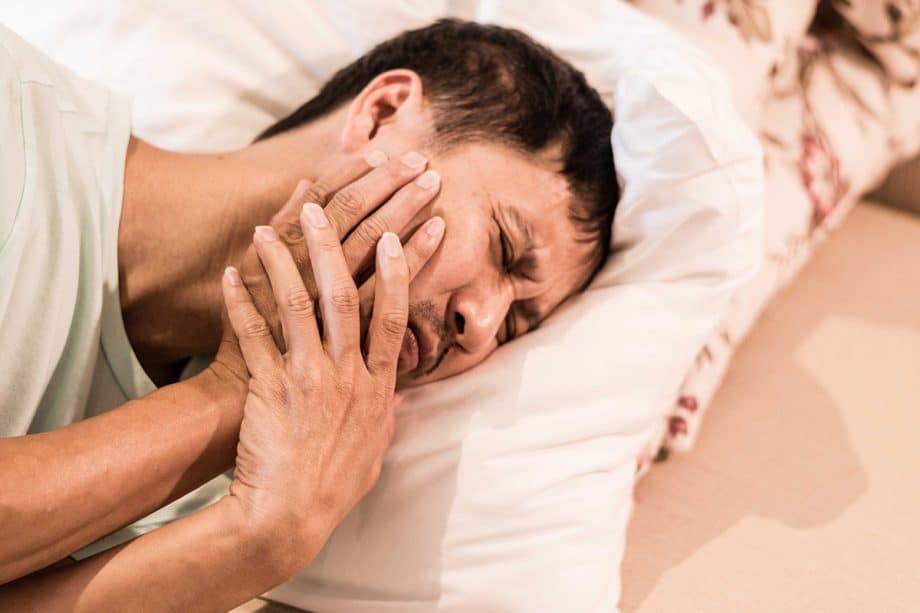TMJ disorder is a condition affecting the jaw. TMJ is short for temporomandibular joint, the place where your lower jaw connects to your skull. You have two of these joints, one on each side of your face. If one or both of these joints becomes inflamed or misaligned, it can cause TMJ disorder.
Do you think you may have TMJ disorder? If so, look for the following 8 signs and symptoms that are common for this condition.
- Pain in the TMJ. If you feel pain in the region of the temporomandibular joint, you will feel it in the temple region of your head or right in front of your ear. This is an indication of irritation or inflammation in the TMJ.
- Pain in the jaw. Sometimes the pain will resonate throughout the jaw, not just in the region of the joint. Your jaw may ache constantly or it could come and go.
- Pain when chewing. You may only feel TMJ pain when you’re chewing. The pain could be anywhere in the jaw or in the area of the joint.
- Headaches. TMJ can cause headaches, especially in the temple region of the head, but also in the back of the head near your neck. The muscles of the jaw wrap around your neck, so the pain can resonate from there as well.
- Limited jaw movement. Swelling or jaw misalignment from TMJ can restrict the movement of your jaw, making it difficult to open and close your mouth. You may find that you can’t open your mouth as wide as you used to. Sometimes your teeth don’t meet together properly when you bite down. In severe cases your jaw may even lock shut.
- Popping or clicking sound in the jaw. You may hear a popping or clicking sound when you open and close your mouth or when you chew. Misalignment of the joint can cause the disc that cushions the joint to slip out of place, which allows the bones to rub together. The sound can also come from ligaments slipping over the bones in the joint due to misalignment.
- Ear pain. The TMJ is right in front of the ear canal, which can make it seem as if the pain is in your ear. It is easy to mistake TMJ disorder for an ear infection, so look for other symptoms to determine where the problem is.
- Pain in the facial muscles. TMJ can cause inflammation and swelling of the joint, which can cause the facial muscles to tense up and become sore.
What Causes TMJ Disorder?
There are a number of potential causes of TMJ disorder:
- Teeth grinding (bruxism). One of the most common causes of TMJ disorder is teeth grinding, or bruxism as it is formally called in dentistry. When you grind or clench your teeth, either at night or throughout the day, it puts extra strain on the TMJ.
- Overuse. TMJ disorder can be caused by overuse of the joint. Constant chewing, talking, singing, or any other activity that involves frequent movement of the jaw can lead to TMJ disorder.
- Chewing hard or chewy foods. Biting or chewing foods like nuts, jerky, meat, candy, or other hard or chewy foods can cause your TMJ to become irritated or inflamed.
- Chewing non-food items. Chewing or biting items that are not food, like pens and pencils, or removing tags or opening containers with your teeth can irritate the TMJ.
- Arthritis. Arthritis is a condition that affects the joints, and the TMJ may also be affected.
- Auto-immune disorders. TMJ can be caused or exacerbated by auto-immune disorders such as rheumatoid arthritis and Sjogren's syndrome.
What To Do If You Think You May Have TMJ Disorder
If you’re experiencing symptoms of TMJ disorder that don’t subside over time, it is best to seek professional treatment. Upper West Side Oral & Maxillofacial Surgery provides diagnosis and treatment for TMJ disorder. We offer a variety of treatment options that can relieve your symptoms from medication to stabilization splints. In severe cases when necessary, we provide surgical intervention. Our goal is to relieve your pain and restore full range of motion through the least invasive means possible.
Call 212-466-6984 or contact us today to learn more and schedule an appointment.


